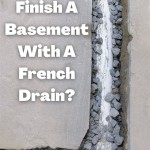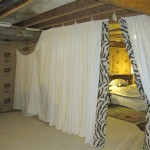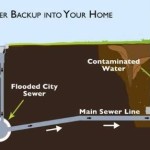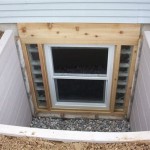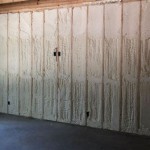What Kind of Insulation Should I Use For Basement Ceiling?
Insulating a basement ceiling is a crucial step in enhancing a home's energy efficiency and comfort. A well-insulated basement ceiling helps regulate temperature, reduce energy bills, and minimize the risk of moisture-related problems. Selecting the appropriate type of insulation requires careful consideration of factors such as budget, climate, building codes, and the specific characteristics of the basement environment. Understanding the various types of insulation available and their respective benefits and drawbacks is essential for making an informed decision.
Basements, often located underground, are naturally cooler than the upper levels of a house. In colder climates, heat can escape from the living areas to the uninsulated basement ceiling, increasing heating costs. Conversely, in warmer climates, the basement can act as a heat sink, drawing cool air away from the upper floors and potentially increasing cooling costs. Insulating the basement ceiling effectively creates a thermal barrier, preventing heat transfer and maintaining a more consistent temperature throughout the house.
In addition to energy efficiency, basement ceiling insulation also plays a significant role in moisture control. Basements are prone to humidity and moisture issues due to their proximity to the ground. Condensation can form on cold surfaces, leading to mold growth, wood rot, and other structural problems. Proper insulation helps to keep the basement warmer, reducing the likelihood of condensation and mitigating these issues. Furthermore, some types of insulation offer inherent moisture resistance, providing an added layer of protection.
Several types of insulation are commonly used for basement ceilings, each with distinct characteristics. These include fiberglass batts, rigid foam boards, spray foam insulation, and mineral wool batts. Each option offers different levels of thermal resistance (R-value), ease of installation, and cost-effectiveness. It is important to evaluate these factors in relation to the specific needs of the basement and the overall goals of the insulation project.
Key Considerations for Choosing Basement Ceiling Insulation
Several factors can influence the choice of insulation for a basement ceiling. Assessing these factors ensures the selected insulation effectively addresses the specific needs and conditions of the basement environment.
Climate and R-Value: The climate in which the house is located is a primary factor in determining the appropriate R-value for the basement ceiling insulation. R-value is a measure of thermal resistance, indicating how well a material resists the flow of heat. Colder climates typically require higher R-values to provide adequate insulation. The U.S. Department of Energy provides recommendations for R-values based on geographic region. These recommendations serve as a guideline for selecting insulation with sufficient thermal performance.
Moisture Resistance: Basements are inherently prone to moisture issues. Therefore, selecting insulation with good moisture resistance is crucial. Some insulation materials, such as closed-cell spray foam and rigid foam boards, are inherently moisture resistant. Other materials, like fiberglass batts, can absorb moisture and lose their insulating properties if they become wet. If using fiberglass batts, consider installing a vapor barrier to prevent moisture from entering the insulation.
Ease of Installation: The ease of installation is another important consideration, particularly for DIY projects. Some insulation types, like fiberglass batts, are relatively easy to install between joists. Others, like spray foam, require specialized equipment and professional installation. Rigid foam boards can also be installed by homeowners but may require careful cutting and sealing to achieve a proper fit. The level of DIY experience and the complexity of the basement ceiling will influence the choice of insulation based on ease of installation.
Comparing Different Types of Basement Ceiling Insulation
Each type of insulation has its own set of advantages and disadvantages. A detailed comparison helps in evaluating the suitability of each option for a specific basement ceiling insulation project.
Fiberglass Batts: Fiberglass batts are a common and relatively inexpensive option for insulating basement ceilings. They consist of glass fibers bonded together with a resin. Fiberglass batts are easy to install between joists and are readily available at most home improvement stores. However, fiberglass batts have a lower R-value per inch compared to other insulation materials. They can also lose their insulating properties if they become wet. Proper installation, including ensuring a tight fit and adding a vapor barrier, is crucial for maximizing the effectiveness of fiberglass batts.
Rigid Foam Boards: Rigid foam boards, such as expanded polystyrene (EPS), extruded polystyrene (XPS), and polyisocyanurate, offer higher R-values per inch than fiberglass batts. They are also moisture resistant, making them a good choice for basements. Rigid foam boards can be cut to size and installed directly against the basement ceiling. Sealing the seams between boards with tape is essential to prevent air leakage. Rigid foam boards are generally more expensive than fiberglass batts, but their superior thermal performance and moisture resistance can justify the higher cost.
Spray Foam Insulation: Spray foam insulation, available in open-cell and closed-cell varieties, provides excellent thermal performance and air sealing. Closed-cell spray foam has a higher R-value per inch and is more moisture resistant than open-cell spray foam. Spray foam expands to fill gaps and cracks, creating a tight seal that prevents air leakage. However, spray foam insulation requires specialized equipment and professional installation, making it a more expensive option than fiberglass batts or rigid foam boards. The cost of spray foam can be offset by its superior energy efficiency and long-term performance.
Mineral Wool Batts: Mineral wool batts, made from rock or slag, offer good thermal performance and fire resistance. They are also more moisture resistant than fiberglass batts. Mineral wool batts are installed in a similar manner to fiberglass batts, fitting between joists. They are slightly more expensive than fiberglass batts but offer better performance in terms of thermal resistance and fire safety. Mineral wool is also a good sound dampener compared to fiberglass.
Installation Considerations for Basement Ceiling Insulation
Proper installation is critical for achieving the desired performance from basement ceiling insulation. Following best practices during installation ensures the insulation effectively reduces heat transfer and minimizes moisture problems.
Preparing the Surface: Before installing insulation, it's crucial to prepare the basement ceiling surface. This involves cleaning the surface to remove any dirt, dust, or debris. Addressing any existing moisture issues, such as leaks or condensation, is also essential. Repairing any cracks or holes in the ceiling will prevent air leakage and ensure the insulation is properly sealed. A clean and dry surface provides a solid foundation for the insulation, maximizing its effectiveness.
Ensuring a Tight Fit: Regardless of the type of insulation used, ensuring a tight fit is crucial for preventing air leakage. Gaps and cracks around the insulation can significantly reduce its thermal performance. When installing fiberglass or mineral wool batts, carefully cut the batts to fit snugly between the joists. For rigid foam boards, seal the seams between boards with tape to prevent air from passing through. Spray foam insulation naturally expands to fill gaps and cracks, providing a tight seal. A tight fit minimizes air leakage and maximizes the energy-saving benefits of the insulation.
Addressing Obstructions: Basements often contain obstructions such as pipes, wiring, and ductwork that can complicate the insulation process. When installing insulation around these obstructions, carefully cut the insulation to fit snugly around them. Use caulk or spray foam to seal any gaps or cracks. It's important to avoid compressing the insulation too much, as this can reduce its thermal performance. Maintaining a consistent level of insulation around obstructions ensures uniform thermal protection throughout the basement ceiling.
Safety Precautions: When working with insulation, it's essential to take appropriate safety precautions. Wear gloves, eye protection, and a dust mask to protect yourself from irritation and respiratory problems. Work in a well-ventilated area to minimize exposure to dust and fumes. Follow the manufacturer's instructions for handling and installing the insulation. Taking these safety precautions will help ensure a safe and healthy insulation project.
Vapor Barrier Considerations: Depending on the climate and the type of insulation used, installing a vapor barrier may be necessary. A vapor barrier is a material that prevents moisture from passing through the insulation. In colder climates, a vapor barrier is typically installed on the warm side of the insulation (the side facing the living space) to prevent moisture from condensing within the insulation. In warmer climates, a vapor barrier may not be necessary or may even be detrimental, as it can trap moisture and lead to mold growth. Consult with a building professional or local building codes to determine whether a vapor barrier is required for the specific climate and insulation type.
In conclusion, selecting the right type of insulation for a basement ceiling involves careful consideration of factors such as climate, moisture resistance, ease of installation, and budget. Each type of insulation offers different levels of thermal performance, air sealing, and moisture protection. By evaluating these factors and following proper installation practices, homeowners can effectively insulate their basement ceilings, improve energy efficiency, and create a more comfortable living environment.

Should I Insulate My Basement Ceiling And Walls Aire Serv

What Are The Pros And Cons Of Basement Ceiling Insulation Upgradedhome Com

What Is Basement Ceiling Insulation And It Worth

Ceiling Insulation In Your Basement

Best Insulation For Basement Ceilings And Why You Need It

Best Insulation For Soundproofing Your Ceiling Renoviso

Basement Ceiling Insulation Interior Inspections Internachi Forum

How To Complete A Diy Basement Walls And Ceiling Insulation Project

Should I Insulate My Basement Constellation

Basement Insulation Upstate Spray Foam
